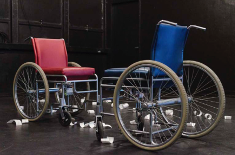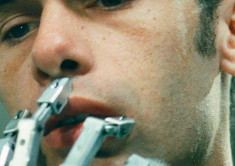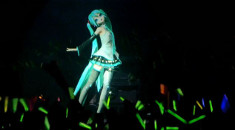Robots and New Media Aesthetics
ROCA seminar Thursday 27. October 2016, 14:15-17:00
University of Copenhagen AmagerRoom 15A.1.13, Njalsgade 80, 2300 Copenhagen SSee map
EDWARD SCHEER
Professor at the School of the Arts and Media, University of New South Wales
Robots Can't Act. New Media Dramaturyg and the New Materialism
I consider the virtual contexts of new media art and theatre as sites where a “vibrant materialism” might offer useful insights on the status of the object, especially the robotic object, in an expanded dramaturgy. Using a number of examples of work from European and Australian artists I examine the ways that art and theatre can function as laboratory environments uniquely suitable for the consideration of Human Robot Interaction (HRI), a context in which it is useful to experience or at least to debate the possibility of object kinship and empathy in the manner of Jane Bennett’s thesis.
Professor Edward Scheer is Director of Research in the School of the Arts and Media at the University of New South Wales, Australia. He is a founding editor of the journal Performance Paradigm and has written essays on art and aesthetics for a range of publications as well as institutions such as the National Gallery of Australia, Documenta 13, the Biennale of Sydney and the Auckland Triennial. He is author, co-author and editor of 10 books in the area of performance and new media including most recently New Media Dramaturgy (Palgrave, 2016) with Peter Eckersall and Helena Grehan. He was President of PSi, Performance Studies international, the international professional association in the field of performance studies from 2007-2011 and a member of the Australian Research Council College of Experts (2013-2015).
GUNHILD BORGGREEN
Associate Professor at the Department of Arts and Cultural Studies, University of Copenhagen
Iintimacy and Technology: Haptic Visuality in Daria Martin's Soft Materials
London-based artist Daria Martin created the 16 mm film Soft Materials in 2004 by filming two dancers interacting with robots in the Artificial Intelligence Lab at the University of Zurich. These robots are constructed to learn through the experience of their physical bodies as they interact with their surroundings. Martin’s work pays attention to the notion of embodiment in the exchange of locomotion and perception between technological and human entities. Her own use of technology in the documentation and display of such interactions invites the viewer into a sphere of uncanny wonder and intimacy. Drawing upon Laura Marks’ notion of haptic visuality, this analysis of Martin’s work explores how the viewer’s body is involved in the process of seeing, and how the image encourages a multisensory experience that contrasts to the mastery associated with optical visuality and thus may offer new modes of understanding human-robot relationships.
Gunhild Borggreen is Associate Professor at the Department of Arts and Cultural Studies, and co-founder and manager of ROCA (Robot Culture and Aesthetics), a research network that combines cultural and aesthetic theories with practice-based insights in order to imagine, theorize, and create new types of human-technology interaction. Gunhild’s main area of research is contemporary art and visual culture in Japan, which also serves as background for her interest in robotics and techno-orientalism. She has co-edited (with Rune Gade) and contributed to the book Performing Archive / Archive of Performance (MTP, 2013), and has published several book chapters on robot culture, such as “Staging Lies: Performativity in the Human-Robot Theatre play I, Worker” (in Social Robots, Ashgate, 2016) and “Robot Bodies. Visual Transfer of the Technological Uncanny” (in TransVisuality, Liverpool University Press, 2015).
STINA HASSE JØRGENSEN
PhD student at the Department of Arts and Cultural Studies, University of Copenhagen
Hatsune Miku and the Commodity Aesthetics of the Cute
Hatsune Miku is a Japanese pop icon attracting thousands of fans to stadium concerts from Tokyo to Los Angeles. Unlike other pop stars, however, she is not of flesh and bones, but made out of data. She is best known as a hologram depicting a manga-like young girl with long legs, short miniskirt and long turquoise hair styled in two pigtails; a character conceptualized by manga artist Kei Garo. Her Japanese name can be translated to; "the first sound of the future," and above all Hatsune Miku is a sound. She is a vocaloid, a voice-based synthesizer technology developed by Crypton Future Media, one of Japan's leading music technology companies. Since she was released in 2007, there have been more than 170,000 songs, using her voice on the video sharing platforms YouTube and niconico, the Japanese equivalent of YouTube, and the number is growing daily. All songs are produced and shared by fans. Fans are understood here as everything from bedroom musicians to professional producers, and composers from around the world. Why do thousands of fans produce and listen to songs sung by a vocaloid? I will discuss Hatsune Miku’s popularity in relation to the commodity aesthetic of the cute as formulated by Sianne Ngai in her book Our Aesthetic Categories (2010), as well as to artistic explorations of the Hatsune Miku as phenomena.
Stina Hasse Jørgensen is a PhD student at the Department of Arts and Cultural Studies, University of Copenhagen, where she is researching the politics and aesthetics of the voice as a digital design product. Stina has published articles on art, technology and sound in magazines and journals such as Seismograf, kunsten.nu, Transformations Journal, Body, Space & Technology Journal, and Cultural Analysis.
The Robots and New Media Aesthetics seminar is organised by ROCA (Robots Culture and Aesthetics) and sponsored by TRANSOR (the Research Network for Transdisciplinary Studies in Social Robotics)
New Media Aesthetics












